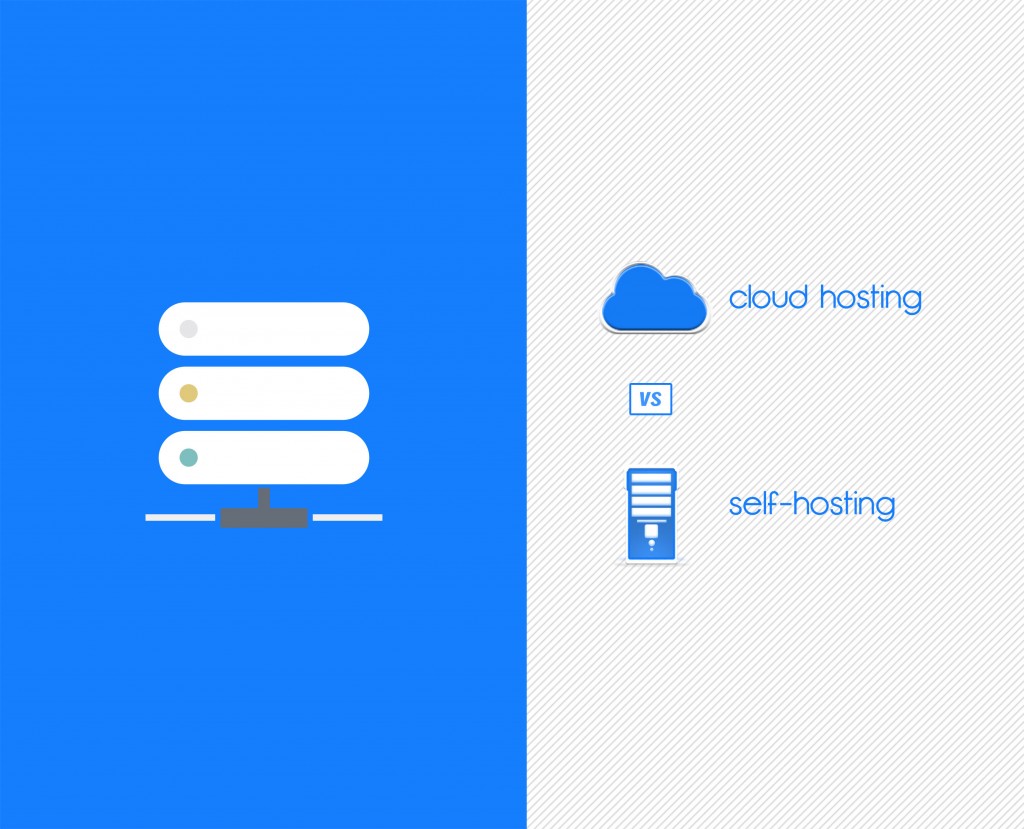“Cloud computing” have been tech buzzwords for many years now, and the technology is certainly here to stay. It’s adapted and grown in stature since its original form, and in today’s modern workplace, cloud computing and modern intranets have revolutionised the way we work; we use it without even thinking about it. But first things first: what exactly do we mean when we talk about working “in the cloud” and how does a cloud intranet solution help you?
Intranets: On-premise vs cloud computing
- Cloud computing defined
- Software in the cloud
- Should I host my intranet in the cloud?
- Intranet in the cloud
- Intranet on-premise hosting

Cloud computing defined
Cloud computing means that your files are stored elsewhere, away from your own personal storage device, such as your computer, USB stick, or mobile. Your files are not held locally on your own physical devices, but instead stored remotely on a set of networked computers and accessed via the internet. A cloud based intranet software gives you the tools and space to store your personal and/or company data safely.
This way of working has countless benefits, not least because you can access your files from anywhere in the world where you have an internet connection. The days of forgetting your USB drive and it being important are over, as you are no longer tied down to physical storage devices to get your work done.
Not only that, storing files in the cloud means that you have a backup solution at your fingertips; how many times have you deleted a file you really needed from your computer only for it to be lost forever? With cloud computing, accidentally deleting files is no longer an issue, as the files will be backed up and version controlled, enabling you to roll back to a previous one at the click of a mouse; think Dropbox and Google Drive.
Software in the cloud
Cloud computing isn’t just limited to file storage; software services can be stored and utilised in the cloud, allowing for instant access to the facilities you need and make your internal communications and file sharing easier and more secure. Buying and installing software from a physical disc are a distant memory; nowadays full suites of software are available to use online as soon as you sign up.
This Software as a Service (SaaS) solution is becoming increasingly popular and gaining a lot of momentum, as more enterprise companies are offering their services on a subscription basis, where they handle the hosting, hardware, installation, and maintenance, and you simply pay to use it.
Consider how popular Google Apps and Office 365 are becoming in the modern workplace; they offer a full package of productivity applications without any installation required on your local computer. Businesses, and SMEs, are starting to reap the benefits of what cloud computing can offer, whereby they can still make use of enterprise software solutions without having to dedicate technical resources to manage them internally.
Should my intranet be hosted in the cloud?
Deploying an intranet software solution to your company involves a lot of work, and understandably needs careful consideration. Each business is different and will have their own unique requirements, and intranet hosting is just one of them.
Choosing to between a cloud based intranet or going with an on premise intranet creates many questions; do you have the infrastructure to host your own company intranet? Do you have the technical knowledge or resources to maintain your intranet? Do you have the capital to purchase the software outright? Do you have the processes in place already to deploy and roll out new software?
Whether you choose to use cloud based intranet software or host it on premise will depend entirely on your circumstances, and the pros and cons of each should be evaluated in line with your business requirements. There is simply no right or wrong answer. Let’s look at each deployment option and how they could work for you.
Cloud hosted intranet 
Hosting any software in the cloud will generate financial, operational, and technical benefits, and choosing to host your intranet in this way is no exception.
From a financial point of view, paying for a SaaS licence to host your intranet in the cloud means you have no upfront costs; you can benefit from paying a manageable monthly subscription which covers all costs. A cloud intranet tends to include server spec, storage space, installation, maintenance, technical support, and the software itself.
This is especially cost effective for businesses that don’t have the budget to hire a dedicated technical resource to install and maintain an intranet, as this is completely taken care of by the SaaS subscription costs. The monthly costs can also be more easily managed and accounted for within the company’s monthly expenditure, as you will know exactly what you are paying for and how much.
The operational side of things are also covered if you choose a SaaS model, where the behind-the-scenes maintenance and up-keep of your intranet server are all part of the service. This is great if you need a no-nonsense intranet solution that doesn’t require any back-end input from internal staff, where considerations such as firewall security, server maintenance, and scalability are dealt with away from the business.
A SaaS intranet solution in the cloud means that the software installation and technical maintenance is entirely taken care of as part of the subscription fee. This offers businesses of all industries complete flexibility, as they are no longer tied down by the belief that they need to be technical to be able to deploy an intranet.
Businesses with an existing but overstretched IT department can also relax, knowing that the responsibility of locating and configuring a suitable server and database is held elsewhere. Backups of your intranet are also taken care of, providing a greater level of redundancy and preventing the issue of locating additional space to store them. Intranet security is also covered, with multiple layers of security available depending on infrastructure.
A cloud-based intranet for small business is a cost effective and easy to implement solution. It allows the business to use all of the latest technological advances at its fingertips while avoiding the hassles of managing an in-house IT system.
An intranet on premise

Choosing to host and deploy software on business premises is typically more expensive and resource heavy, but for larger enterprises especially, can be a much more suitable option than hosting an intranet in the cloud.
Cost wise, buying an intranet software license upfront can be expensive, but if planned for appropriately, paying a one-time fee can work out to be more cost effective than spreading the cost. Dedicated IT teams will have full control over the scalability of the intranet server, so if you need to expand the storage space or server spec, this can be handled internally rather than paying an increased subscription fee for a high spec server. The only additional costs needed would be for an annual technical support contract – which would be needed for a SaaS solution as well.
The operational running of the server would be the business’s responsibility, which for a small business may not be affordable or even suitable. Dedicated resources are needed to maintain areas such as server security, which can be overwhelming for a small team.
However, for companies with the available resources, being able to have full control over the server is preferred, or even mandatory, if required by the company’s policies. Companies with strict security procedures can utilise their own corporate firewalls and enhanced security measures to protect their intranet server, as well as being able to control server maintenance such as OS security updates.
Hosting your intranet in-house will require a proficient level of technical knowledge amongst your team members, so that processes such as security updates, server maintenance, and scalability can be carried out periodically to ensure a smooth and consistent service.
This level of control works well in companies where IT teams are established and have software deployment strategies already in place. IT teams will also be responsible for backups, which allows them to tailor a backup solution suitable to their needs and storage availability.
Which option is best for me?
Deciding which hosting option is best for your intranet is on the surface a challenging task, and the reasons for choosing the cloud or on premise will depend on the scope of your business. By assessing your company’s needs, reviewing your existing strategies, and calculating costs, you can be a lot closer to making a well-informed and researched choice.





